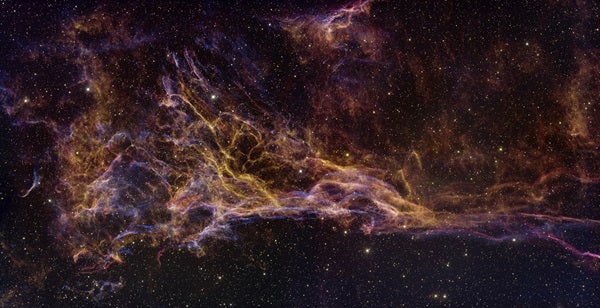January 9, 2008
A new wide-field image of Pickering’s Triangle is being released today in Austin, Texas, at the 211th meeting of the American Astronomical Society. The image was taken with the National Science Foundation’s Mayall 4-meter telescope at Kitt Peak National Observatory.
A new wide-field image of Pickering’s Triangle is being released today in Austin, Texas, at the 211th meeting of the American Astronomical Society. The image was taken with the National Science Foundation’s Mayall 4-meter telescope at Kitt Peak National Observatory.
Pickering’s Triangle is part of the Cygnus Loop supernova remnant, which includes the famous Veil Nebula. It is located about 1,500 light-years from Earth, in the constellation Cygnus, the Swan. Astronomers estimate that the supernova explosion that produced the nebula occurred between 5,000 to 10,000 years ago; the entire shell stretches more than six full Moons in width across the sky.
This new image was obtained September 2007 by Travis Rector and Heidi Schweiker by combining two full pointings of the 64-megapixel NOAO Mosaic-1 imager, mounted on the historic Mayall telescope.










